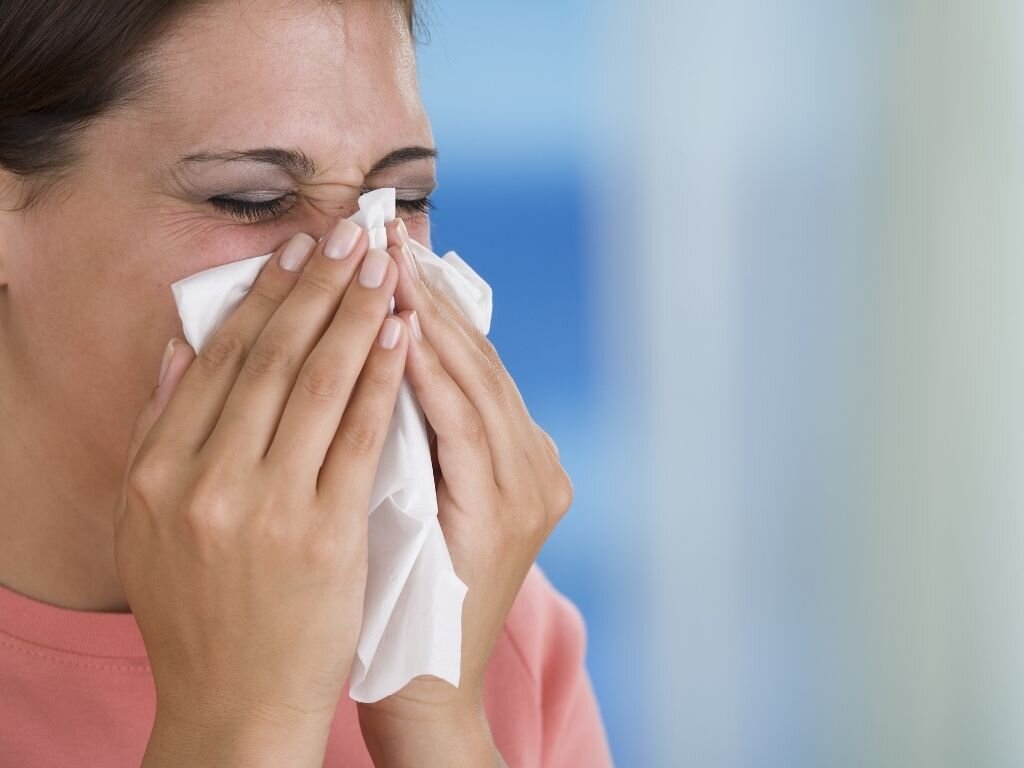Seasonal allergic rhinitis, commonly referred to as hay fever, affects about 81 million Americans, according to Asthma and Allergy Foundation of American.
Hay fever arises when your immune system reacts excessively to outdoor allergens, such as pollen. An allergen is any substance that triggers an allergic response. Among the most prevalent allergens are pollens released by wind-pollinated plants, including trees, grasses, and weeds. Pollens from insect-pollinated plants, being heavier, tend to remain airborne for shorter durations and are less likely to provoke allergic reactions.
The term “hay fever” derives from the historical association with the season of hay-cutting, which traditionally occurred during the summer months, coinciding with the peak manifestation of symptoms for many individuals.
Although seasonal allergies are less prevalent in winter, allergic rhinitis can persist throughout the year. Different plants release their pollens at varying times, leading to potential hay fever experiences across multiple seasons, contingent upon individual allergy triggers and geographic location. Additionally, reactions to indoor allergens such as mold or pet dander can also contribute to year-round allergic rhinitis.
Symptoms of seasonal allergies
Seasonal allergy symptoms can range from mild to severe, with common manifestations including sneezing, nasal congestion or a runny nose, itchy and watery eyes, sinus, throat, or ear canal irritation, ear congestion, and postnasal drip. Less frequent symptoms may include headaches, breathing difficulties, wheezing, and coughing. It’s important to note that many individuals with hay fever also suffer from asthma, and exposure to seasonal allergens can potentially trigger asthma attacks in those affected by both conditions.
Causes of seasonal allergies
Hay fever occurs when the immune system misidentifies an ordinarily harmless airborne substance as a threat, prompting the release of histamines and other chemicals into the bloodstream, resulting in allergic symptoms.
The triggers for hay fever vary with the seasons:
Spring
In spring, trees, particularly birch in northern regions, are prominent triggers for seasonal allergies. Other allergenic trees in North America include cedar, alder, horse chestnut, willow, and poplar.
Summer
Summer is associated with hay fever due to grasses like ryegrass and timothy grass, as well as certain weeds, being the primary triggers. Grasses are noted as the most prevalent trigger for hay fever sufferers, according to the Asthma and Allergy Foundation of America.
Fall
Fall marks ragweed season, with the Ambrosia genus comprising over 40 species, primarily found in temperate regions of the Americas. Ragweed pollen is highly allergenic, and its allergy symptoms can be particularly severe. Other plants releasing pollen in autumn include nettles, mugworts, sorrels, fat hens, and plantains.
Winter
During winter, outdoor allergens typically become dormant, providing relief for many hay fever sufferers. However, increased indoor activity during cold weather may expose individuals to indoor allergens such as mold, pet dander, dust mites, or cockroaches, potentially triggering allergic reactions in susceptible individuals.
Tips to Control Indoor Allergens
Indoor allergens can often be more effectively eliminated from your surroundings compared to outdoor pollens. Below are some recommendations for reducing common allergens in your home:
- Launder your bedding in hot water weekly.
- Utilize allergen-proof covers for bedding and pillows.
- Address water leaks promptly to prevent mold and pest infestations.
- Clean mold-prone areas regularly, including humidifiers, swamp coolers, air conditioners, and refrigerators.
- Use a dehumidifier to control excess moisture levels.
- Remove carpets and upholstered furniture.
- Eliminate stuffed toys from children’s bedrooms.
Preventive Measures
- Take precautions to minimize exposure to seasonal allergens. For instance, opt for an air conditioner equipped with a HEPA filter during summer instead of ceiling fans.
- Stay informed about pollen forecasts via your local weather network and try to stay indoors when pollen levels are elevated.
- During periods of heightened hay fever activity:
- Keep windows closed.
- Limit outdoor activities.
- Consider wearing a dust mask when outdoors, particularly on windy days.
- Furthermore, it’s crucial to avoid cigarette smoke, as it can exacerbate hay fever symptoms.
A Note from Biocleve
The discomfort associated with seasonal allergy symptoms can be bothersome. If you suspect you’re experiencing seasonal allergies, it’s advisable to consult with your doctor. They can assess your symptoms, determine the underlying cause, and devise an appropriate treatment strategy. Typically, they will advise you on methods to minimize exposure to allergens and may suggest over-the-counter or prescription medications to alleviate symptoms.
